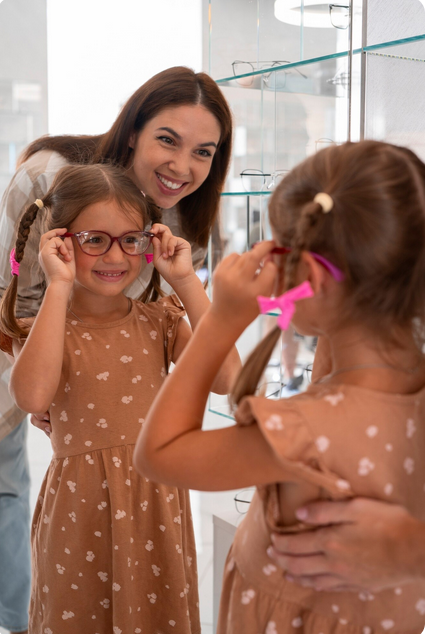Pediatric ptosis, or drooping of the upper eyelid in children, is more than just a cosmetic concern. When left untreated, it can interfere with normal visual development, potentially leading to lazy eye (amblyopia), poor depth perception, or other vision problems.
If your child has a droopy eyelid, you may be wondering:
- Does it require surgery?
- Will it affect their vision long-term?
- When is the best time for treatment?
This guide explains everything parents need to know about ptosis correction in children, including causes, symptoms, surgical options, and what to expect.
👁️ What Is Pediatric Ptosis?
Ptosis is a condition where the upper eyelid droops lower than normal. In children, this is most commonly due to congenital ptosis, meaning the child was born with it.
Types of Pediatric Ptosis:
- Congenital ptosis – Most common, caused by improper development of the levator muscle.
- Acquired ptosis – Less common in children, may result from trauma, nerve damage, tumors, or long-term contact lens use.
🧠 Why Does Pediatric Ptosis Matter?
When a child has a droopy eyelid, it can block part or all of the visual axis, especially in cases of severe ptosis. This can disrupt normal visual development, potentially leading to:
- Amblyopia (lazy eye) – The brain starts ignoring the image from the affected eye.
- Astigmatism – Pressure from the drooping eyelid can affect the shape of the cornea.
- Strabismus – Misalignment of the eyes due to compensation mechanisms.
- Postural issues – Children may tilt their heads back or raise their eyebrows to see better.
👉 Early detection and intervention are critical to ensure healthy visual development.
🔍 Signs and Symptoms Parents Should Watch For
- One eyelid appears lower than the other
- Child is tilting the head back or raising eyebrows often
- Uneven eye size appearance
- Frequent eye rubbing or blinking
- Complaints of blurred vision or eye fatigue
- Difficulty seeing, especially in bright light
🏥 When to Seek Medical Evaluation
If you notice a drooping eyelid in your child—especially if it seems to affect their vision—you should consult a pediatric ophthalmologist or oculoplastic surgeon. The doctor will evaluate:
- Eyelid position (MRD1)
- Levator muscle function
- Presence of amblyopia or astigmatism
- Need for vision therapy or surgical correction
✂️ Treatment Options for Pediatric Ptosis
1. Non-Surgical Observation
- Mild ptosis with no vision obstruction may only require monitoring.
- Regular eye exams are crucial to watch for signs of amblyopia or vision changes.
2. Ptosis Surgery
Surgical correction is typically recommended if:
- The drooping eyelid blocks the visual axis
- There’s a risk of amblyopia
- The child experiences cosmetic or social issues related to appearance
🧑⚕️ Common Pediatric Ptosis Surgery Techniques
✅ Frontalis Sling Procedure
- Used when the levator muscle is very weak.
- Connects the eyelid to the frontalis (forehead) muscle, allowing the child to lift the eyelid using their forehead.
- Often used in congenital ptosis.
✅ Levator Resection
- Used when the levator muscle has moderate function.
- The surgeon shortens and tightens the levator muscle to lift the eyelid more effectively.
✅ Müller’s Muscle Resection
- Rarely used in children, more suitable for mild ptosis with good muscle tone.
The type of surgery depends on:
- Age of the child
- Severity of ptosis
- Levator function
- Overall eye health
📅 What’s the Best Age for Ptosis Surgery in Children?
Surgery may be done as early as 6 months to 2 years of age if the eyelid obstructs vision. In mild or non-urgent cases, the surgeon may wait until the child is 3–5 years old, when anesthesia is safer and cooperation is easier.
🩺 What to Expect Before, During, and After Surgery
Before Surgery:
- Eye exam and visual field testing
- Photographs to document eyelid position
- Discussion of surgical goals and risks
During Surgery:
- Typically performed under general anesthesia
- Outpatient procedure (same-day discharge)
- Duration: around 1–2 hours
After Surgery:
- Temporary swelling or bruising is normal
- Child may need ointment or drops for several days
- Follow-up visits ensure proper healing and eyelid position
- Results are often permanent, though some children may need revision later in life
⚠️ Risks and Considerations
While ptosis surgery in children is generally safe, potential risks include:
- Asymmetry between eyelids
- Undercorrection or overcorrection
- Lagophthalmos (incomplete eyelid closure)
- Need for future revisions, especially during facial growth
✅ Final Thoughts
Pediatric ptosis is a condition that should be evaluated early to protect a child’s developing vision. While not all cases require surgery, prompt diagnosis and appropriate management—whether through observation, vision therapy, or surgical correction—can prevent long-term visual problems and help your child thrive socially and developmentally.
If you suspect your child has ptosis, consult a board-certified pediatric ophthalmologist or oculoplastic surgeon for a comprehensive evaluation and personalized treatment plan.
Tags: ptosis in children, congenital ptosis treatment, pediatric eyelid surgery, droopy eyelid in kids, ptosis correction for amblyopia prevention
Would you like a printable “Parent’s Guide to Pediatric Ptosis” or a Q&A sheet for clinic use or your blog? I can create that next!




